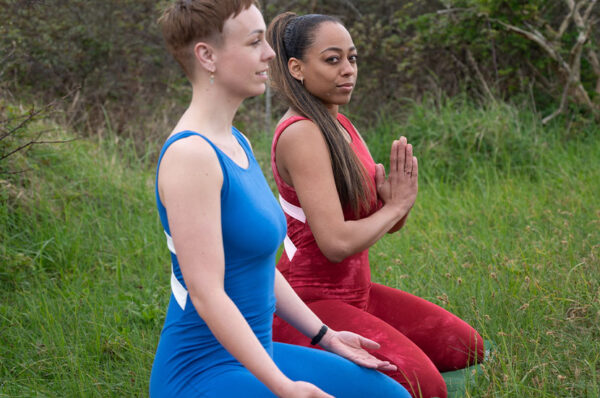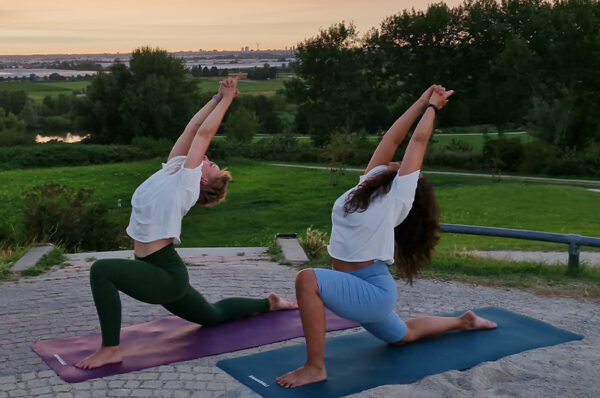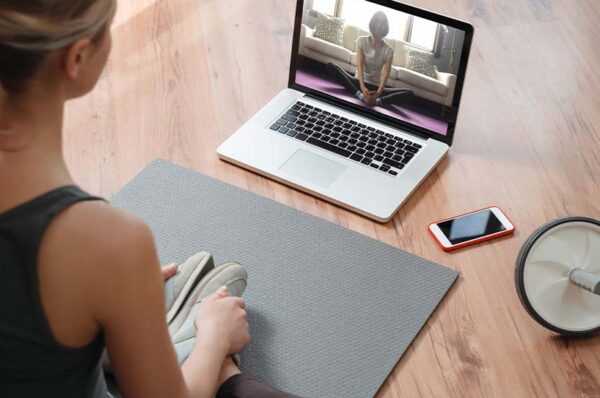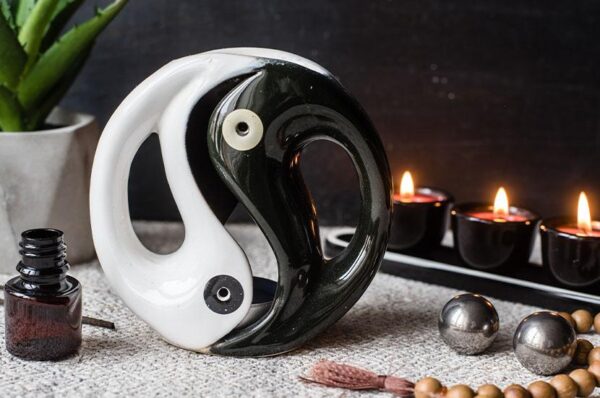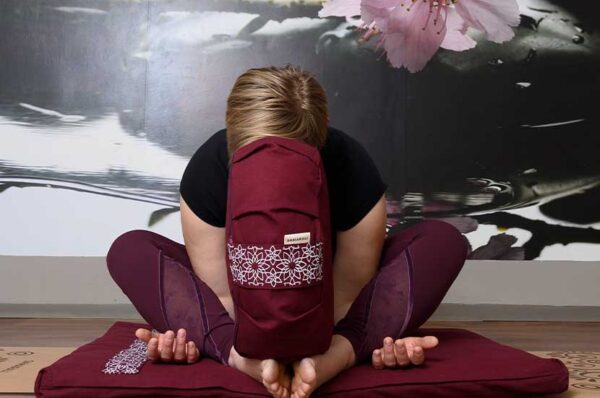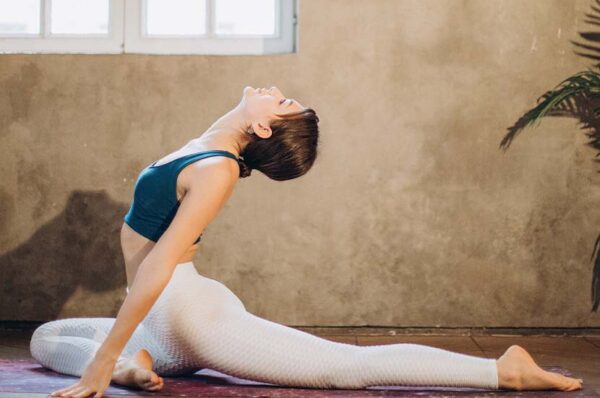Hasta Mudras – An Extension Of Our Hearts
– Guest blog post by Marianna –
Have you ever thought about what we do every day with our hands?
We touch, work, cook, write, type, draw, heal, express ourselves, hold one another. We engage hands to communicate emotions, thoughts, sentiments.
If you have been to a yoga class, there is for sure one hand gesture that you have performed at the beginning and/or end of the class. Yes, exactly: hands in front of your heart, whispering Namaste.
Definition
Hasta Mudras – translated as seals, stamps, or gestures – are sacred hand movements. Some say there are more than 100 known, that have been used for thousands of years as a way of deepening the practice and awakening the power of the Divine.
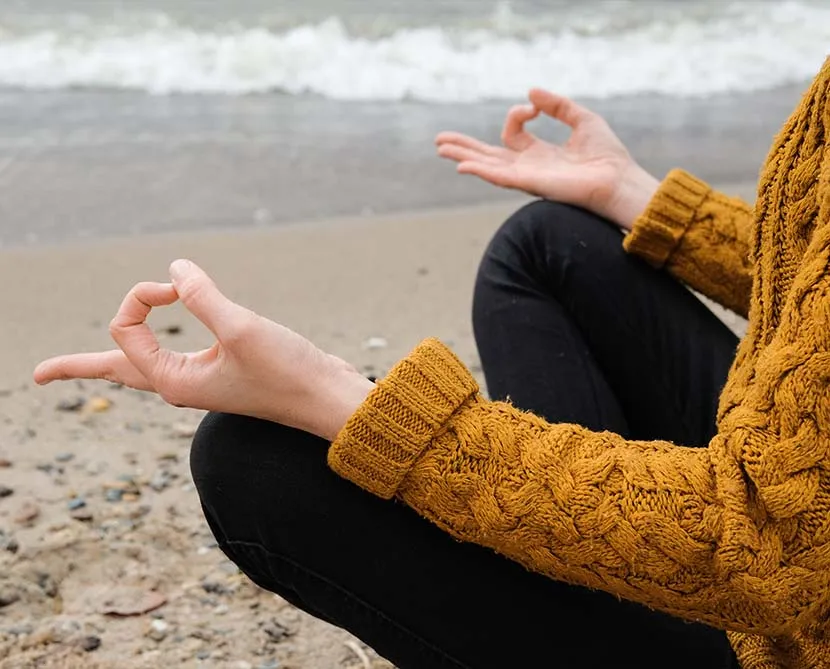
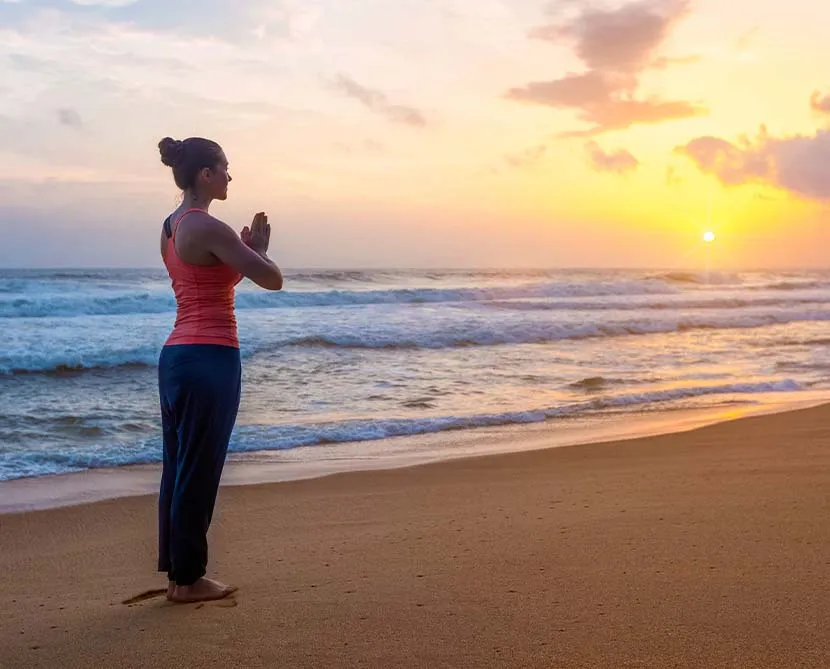
The precise placement of the fingers and gaze directs the pranic energy generated in asana and pranayama practice to flow in balance through the subtle body.
Every mudra has a particular purpose, but in general, we can say that the main goal is to create harmony among the tattvas, the five elements that make reality – earth, air, fire, water, and space – and help you focus on whatever aspect of your life feels challenging.
Every Finger Connects To A Specific Element
According to Ayurveda, each finger of our hands connects to a different tattva, and the touch of 2 of them develops a different effect.
The thumb corresponds to fire, and when touches the index finger (the air element), it enhances the movement of the breath. The middle finger (space element) and thumb together increase the sense of space.
The ring finger (earth) with the thumb develops a sense of stability. Last but not least, the water element is represented by the pinky finger that together with the thumb improves circulation.
Adding a few hand gestures in your practice with awareness and respect can change your experience of yoga asana, get the energy flowing, and enhance your focus.
Anjaly Mudra – The Crux Of Yoga Practice
Namaste and Anjali are generally interchangeable names for a similar gesture.
We end classes with the gesture of bringing our hands to prayer and the salutation namaste. This is reflective of yoga’s end goal.
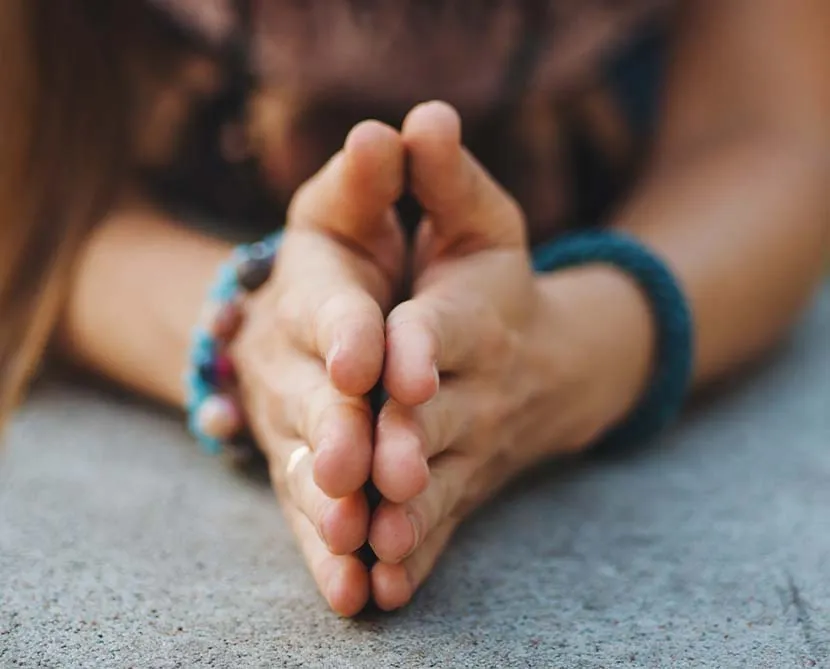
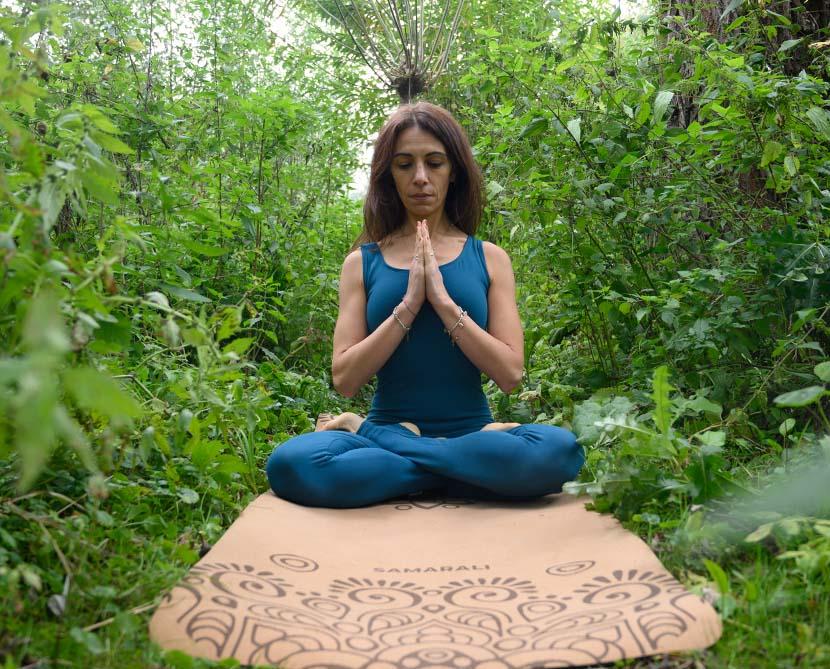
The concept of duality is part of our existence. The ultimate aim of asana practice is to use various methods to dissolve the opposition and allow all our energy to be unified.
A constant flow of energy that favors neither light nor dark, good nor bad, up nor down, like a pendulum swinging that eventually comes to rest in the center, which for a yogi, is the heart.
Bringing the hands in front of the heart saying “the light in me honors the light in you” reminds us of this search of balance, the center, the inner axis.
Yoga seeks to join all opposites and dissolve any illusion of separateness that may exist.
Mudra To Center Yourself
Sit on the floor and align your spine. Place the fingers of one hand on your crown and the side of your other hand at your pubic bone. Breath deeply for four breaths along this vertical axis.
Energy-Charging Mudra
Make fists, one on top of the other with your thumbs out, at elbow height.
Breathe deeply without clenching your fists to gather new reserves of calm strength.
Receiving And Giving Mudras
Position your hands out flat in front of you with your thumbs tucked under. Turn your wrists in so that the backs of your hands touch. Rotate them down and back several times. End with an open gesture.
Anjaneyasana With Pushpaputa Mudra
Come into Anjaneyasana: kneel, then step your left foot forward, aligning your left knee over your heel. Lower your hips.
Bring your palms flat with fingers together, then bend your fingers slightly to make the shape of a bowl. Bring the outer edges of both of your hands to touch.
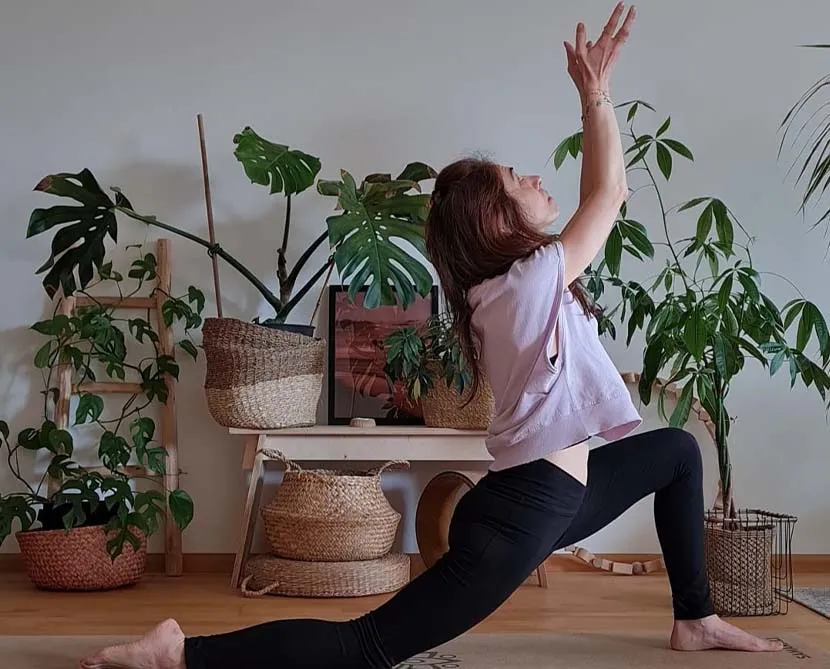
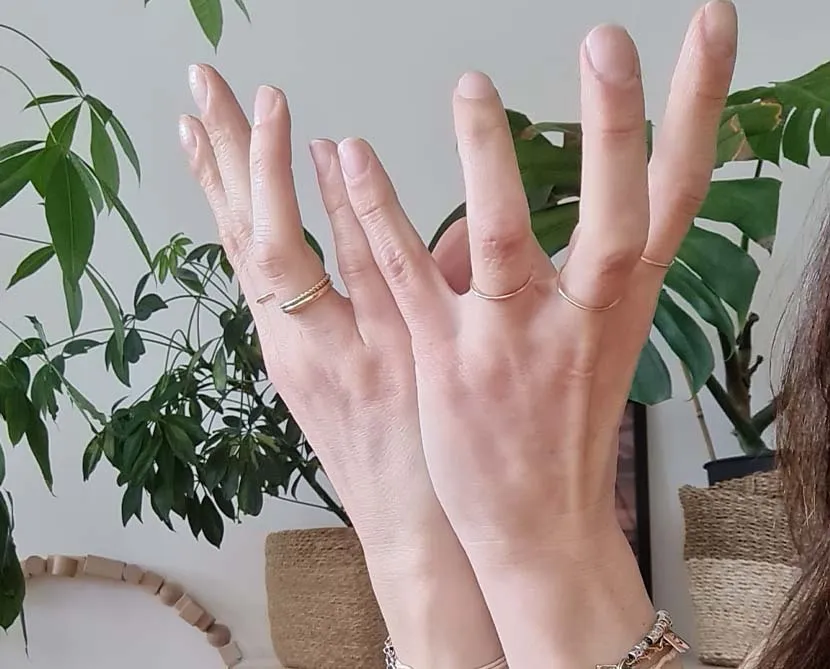
As you hold it, imagine that you are inhaling and taking the light into your heart via your hands. As you exhale, offer the light of your heart to the world.
Slightly bend your back to open your heart to the sky and repeat “As I inhale, I receive abundance. As I exhale, I give generosity.”
Flowers Mudras
They help you close your practice and reflect on the beauty of nature.
Padma Mudra
Make the shape of a lotus bud: join the outer edges of each hand and the pads of your little fingers and thumbs. Spread your remaining fingers. Hold your mudra over four breath cycles.
Hamsasya Mudra
Mimic picking a flower, either to smell, offer, or place in one’s hair. Connect your index finger with your thumb, then open your other three fingers.
Jnana Mudra Or Mudra Of Knowledge
Join the thumb and pointing finger and extend the other fingers.
Thumb represents Brahman (infinite consciousness).
Index finger represents Atman (true nature).
Middle finger represents Buddhi (intellect).
Ring finger represents Manas (mind).
Pinky finger represents Kaya (body).
Placing your thumb and index finger together seals the intention of realizing that your true nature is nothing but infinite consciousness.
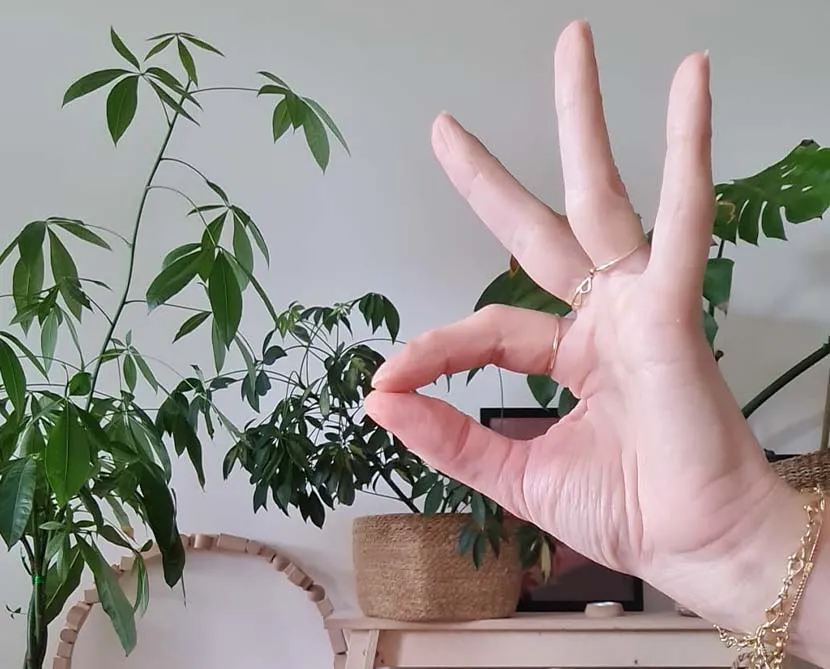
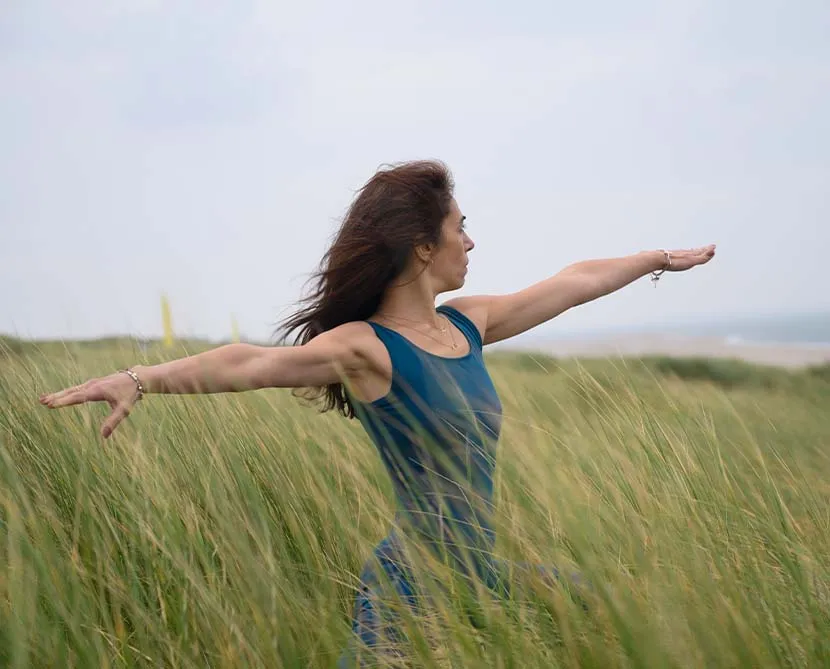
Sources:
- Yoga Journal: Mudras 101 yoga hand gestures
- Ashtanga Yoga – Gregor Maehle
- Yoga for pregnancy – Françoise Barbira Freedman
Marianna has been practicing Yoga for more than eight years, and in 2020
she completed the 200h Yoga Teacher Training in Vinyasa at YogaMoves in Utrecht.
She is passionate about sharing Yoga with others, living more sustainably,
and traveling. Here is her INSTAGRAM page.


